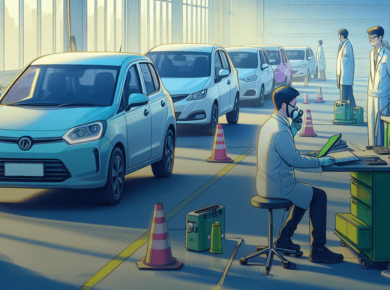Have you ever wondered when the first car with electric traction was invented? It was long ago, 1830 in Scotland. 50 years later, an American, William Morrison assembled the first electric carriage.
Since 2010, the electric vehicle market in the United States has grown nonstop. Today, people give more and more priority to electric cars due to their economic and eco-friendly image. There are 1.2 million electric vehicles in use in the United States. According to studies, the number will increase to 18.7 million by 2030. That being said, what about used EV batteries?
Rechargeable batteries are the main source of power for electric vehicles. In short, accumulated electricity sets in motion an engine, which spins the wheels and supports all the vehicle’s internal systems. Therefore, a car’s lifetime is entirely determined by car battery efficiency which may sufficiently decrease due to inactivity, fast charge, and vibration. In fact, even a climate affects battery life.
On average, a car battery lasts from 5 to 7 years. Auto mechanics, as well as carmakers, don’t lose the hope to prolong battery age and increase the existing charge level. Apart from quite obvious ways like driving at a certain speed, not using excessive heating or cooling, one of the most effective methods is currently recognized as regenerative braking. It basically gives batteries additional energy reserves.
Firstly, it was considered that batteries are more eco-friendly than fuel, though, after some research, many questions remain open. Battery production has a considerable impact upon the environment that depletes the resources for their manufacture. As they are produced of various metals like lithium, nickel, manganese, cobalt, and aluminum, they are toxic for water and soil where they can flow from dumps. Therefore, recycling is the only way to give electric cars a huge advantage over internal combustion engines, environmentally speaking.
Some automotive rulers, like Nissan and Tesla, work on battery reuse for vehicles of similar types as it may be more cost-effective, and they can be easily recycled further. It is also considered that used batteries can be used as an alternative source of energy in homes. For instance, Nissan Leaf retains 80% capacity after its first life. So, second-life batteries can serve up to 6-10 years. Until used vehicle accumulators are powerful enough for other electrical appliances and equipment, they are still being investigated for best use and environmental effect.
Since today we have a great variety of electric vehicles and a huge number of consumers all over the world, manufacturers are doing whatever is possible to produce cheap universal batteries which would be easy to use, reuse and recycle. Though, one goal is still to make them effective and harmless for the environment.
Buying a used car is something that everyone can do to reduce a negative impact on the environment. Moreover, usually, electric vehicles require less servicing and maintenance in general. However, you should always remember your safety is most important, so we advise you to check a vehicle history prior to getting behind the wheel. Feel free to use our free VIN check or run a license plate number lookup in order to reveal all the vehicle background details.









